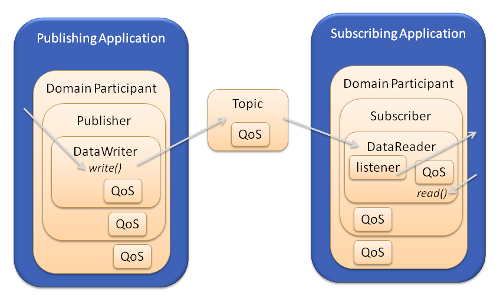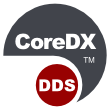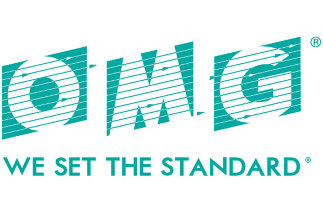Open Standards and CoreDX DDS
An overview of the Data Distribution Service (DDS) standards and technology
Introduction
CoreDX DDS is an implementation of the Data Distribution Service (DDS). DDS is an Object Management Group (OMG) standard that defines a system, application programming interface (API) and wire protocol for type-safe network communications. DDS was designed specifically to meet the performance and QoS requirements of real-time and embedded systems. It has been adopted in the Internet of Things (IoT), and time-critical and mission-critical applications including tactical defense systems; aerospace; railroad and roadway traffic management; industrial control; Supervisory Control and Data Acquisition (SCADA); financial market data distribution; and automated trading.
The DDS Standards
The OMG manages several standards related to the DDS technology and CoreDX DDS, including:
- DDS: Data Distribution Service, which defines the Application Programming Interface (API) for DDS
- RTPS: Real Time Publish Subscribe wire protocol, which defines the strict on-the-wire protocol for publish-subscribe communications
- CDR: Common Data Representation, which defines the data encoding and decoding rules
- IDL: Interface Definition Language, which defines the Application data type representation used by DDS
DDS Vendors and Users from around the world participate in the management of these DDS standards.
The FACE Standards
The Future Airborne Capability Environment (FACE) is a technical standard describing a common software computing environment and architecture for airborne platforms, referred to as the FACE Reference Architecture. The goal of FACE is to ultimately lower implementation costs of new airborne systems by promoting standardized approaches and processes, software reuse, interoperability and portability of applications across different air platforms. The FACE standard is managed by the Open Group, a collaboration of Government agencies, contractors, and commercial companies.
Learn more about FACE and CoreDX DDS…
Benefits of a CoreDX DDS Infrastructure
The Open Architecture design of DDS can reduce the software lifecycle costs and risks associated with systems that will be maintained over the course of many years.
DDS provides an Open Standard based communications architecture. By eliminating custom software and providing standard interfaces, DDS reduces development time and eases maintenance.
DDS decouples applications. By avoiding hardcoded, stovepipe systems, individual subsystems can be added or upgraded without modifying other software.
DDS applications are interoperable across operating systems, hardware architectures and programming languages. Learn more about Interoperability...
DDS provides vendor independence. Applications are portable and interoperable across compliant implementations.
IT decision makers are looking for freedom from vendor lock-in: the concept that once you start using a particular vendor’s product, it will take too many resources to change to a different product, even if it is less expensive or better meets your needs.
Learn more about CoreDX DDS Features and BenefitsAP...
The DDS Architecture
The DDS standard centers around a straightforward architecture of software entities. These components are arranged in a hierarchy, and each serves a unique purpose in the overall Publish-Subscribe infrastructure. A high-level diagram demonstrates the relationship between the DomainParticipant, Publisher, Subscriber, DataWriter, DataReader, and Topic entities.

This diagram demonstrates the logical structure of the major DDS components.
- DomainParticipants belong to a Domain
- DomainParticipants contain Publisher(s) and Subscriber(s)
- Each Publisher can contain any number of DataWriters
- Each Subscriber can contain any number of DataReaders
- DataReaders and DataWriters are logically connected through a Topic
- A Topic has a name and a data type
- DataWriters produce data samples that are of the data type of their associated Topic
- DataReaders consume data samples that match their associated Topic
These simple concepts are extended through the use of Quality of Service settings and the
more complex Topic types. For example, a Topic may be defined that is an aggregate of several
data types (MultiTopic). Also, a ContentFilteredTopic executes a filter on the data samples,
potentially reducing the number of samples that a DataReader has to process.
Learn more about the CoreDX DDS Architecture...
Summary
Because DDS is an Open Standard, you can be confident about selecting CoreDX DDS. We provide world-class support and a commercial-grade software product. The standard Application Programming Interface (API) and an interoperable wire-protocol make CoreDX DDS a sound investment for the long term.








